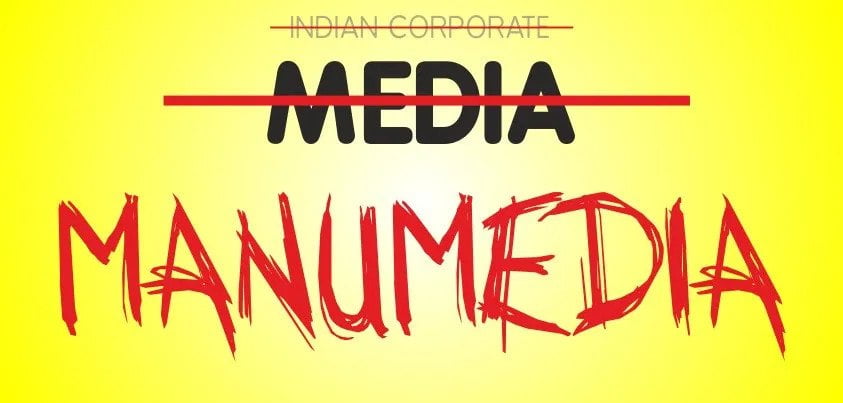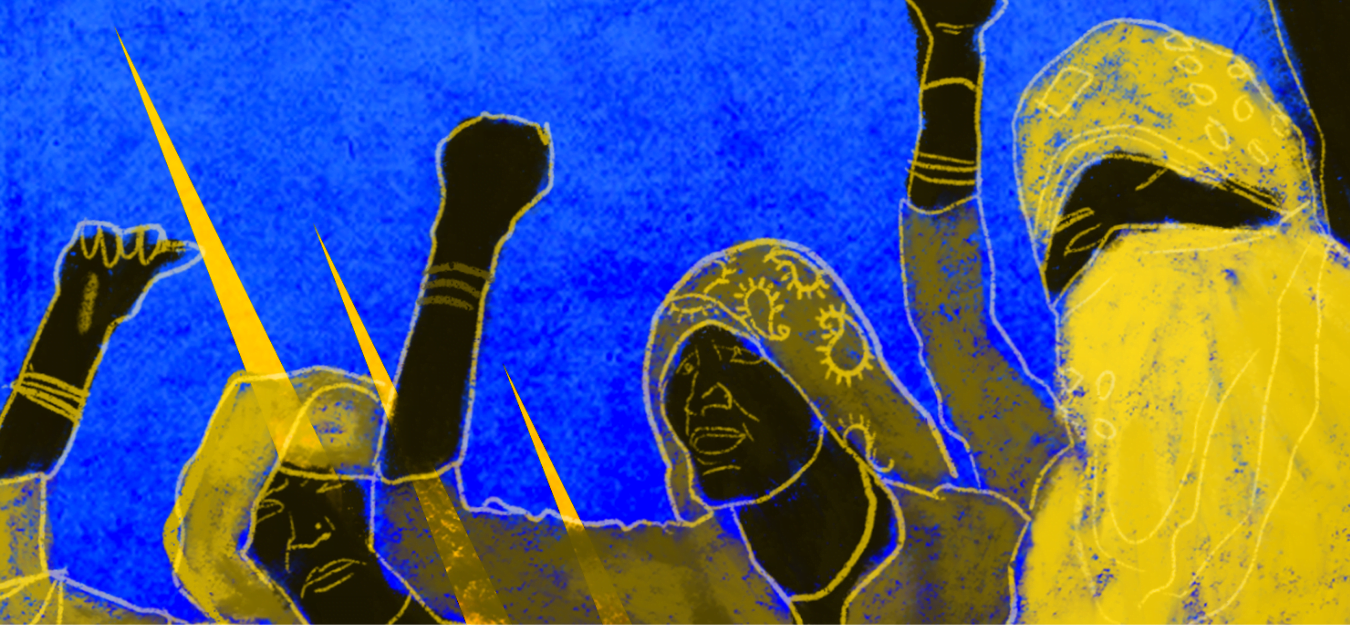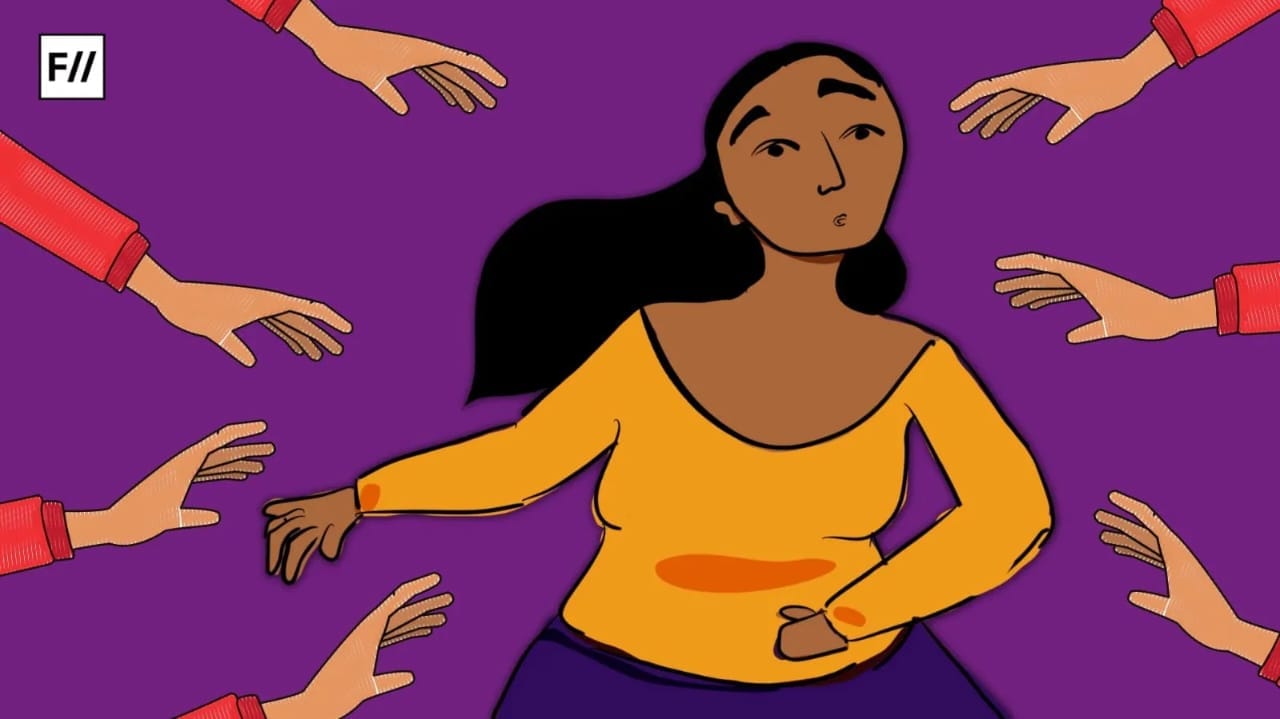Trigger Warning: Mentions of sexual violence
The caste system or varna system is the present reality that is deeply rooted in Indian society. We cannot deny the oppression based on caste over marginalised communities by the upper castes and its particular impact on Dalit women. In this article, I would like to raise this issue of caste-based sexual violence and the media’s role in Dalit women’s exploitation.
To exercise power over oppressed castes, men from oppressor castes target the women from the targeted castes which lead to caste-based sexual violence.
In the caste system, the position of women is even lower than the four varnas. This system is closely linked to the concept of purity. The caste system considers Dalits as the ‘impure’. Because of stereotypes around impurity, they are seen as untouchables and excluded from the mainstream society. Dalit women are further oppressed among the Dalit community, which leaves no place for them in society.
Dalit Women And Violence
Uma Chakravarty in her book Gendering Castes states that in the Brahmanical religion, the existence of a woman is considered only when she is someone’s wife, only then in this society a woman is given importance, she is considered lucky, and thus in this religion marriage is considered as the ultimate goal of a woman. She has no existence outside of her husband’s existence. So, a woman is not considered as a human in this Brahmanical or Vedic religion – her husband is a human and she has the place of his slave. Her status is considered inferior to that of the human race.
Why is marriage considered the ultimate goal of a woman? The reason for this is that a Brahmin man should attain salvation. What is written in religious scriptures about how a Brahmin man can attain heaven? A Brahmin man has to repay three types of debts to attain the goal of salvation. One is Brahmacharya, the other is Yajnavidhi and the third is Pitar. He needs a woman for these two things, Yajnavidhi and Pitar. So the man wants his child to perform the rituals required for this, but he needs a woman to give birth to this child. The Brahmin man needs the child to be of ‘pure’ blood for this ritual, and therefore only the Brahmin woman has the right to perform these rituals with the Brahmin man.
This shows that unequal social relations between Dalit women and dominant/upper caste women are based on ritual purity. Therefore, respect and dignity given to the women in a caste society are based on the ritual status of women. Hence in gender and caste hierarchy, Dalit women are oppressed of the oppressed.
Also read: Dalit Women Will Get Justice Only If Casteist Judicial System Is Uprooted
Caste And Sexual Violence
“Where tradition dries up women like a decadent tree, where they have to spend their whole life, where they have to live under the black shadow of someone else.
In such a country women are still slaves.
It is a crime to be born a woman, it is a crime to be born a woman.”
~Hira Bansode
The above piece of the poem written by the famous Marathi Dalit poet Hira Bansode truly uncovers the trouble faced by women in India. Her poem not only articulates the standpoint of the women in India but the standpoint of Dalit women who are at the bottom of the caste-gender ladder. Her poem presents the social paradigm and reiterates the inescapable nature of exploitation and sexual violence women face in India. Indian women are categorised and identified with their caste even before their gender, they are Dalit women, Maratha women, Brahmin women, which invariably makes it a reason for their exploitation which is different for different women.
Gender within caste society is thus defined and structured by the degree of control men exercise over women and the degree of the passivity of the women of the caste.
Gender within caste society is thus defined and structured by the degree of control men exercise over women and the degree of the passivity of the women of the caste. By the same argument, demonstrating control by humiliating women of another caste is a certain way of enhancing the ‘manhood‘ of the perpetrator castes. Hence in Brahmanism, the sexuality of women from lower castes is available for the men from upper castes. To exercise power over oppressed castes, men from oppressor castes target the women from the targeted castes which lead to caste-based sexual violence.
According to the paper Understanding Sexual violence as a form of caste violence by Prachi Patil, the caste system has always been the spine of Indian social stratification. Caste rules and norms not only shape the daily functioning of village life, but they have also successfully penetrated modern-day life. The two most important characteristics of the Indian caste system have to do with endogamy and occupational restriction. Strict endogamy patterns ensure that every member of a caste or subcaste marries within their caste.
Dalit women are seen as belonging outside the normative structure of caste purity and hence sexual purity. The caste system sanctions the upper-caste man’s access to Dalit woman’s sexuality, body and labour. Caste-based sexual violence against Dalit women is condoned and considered normal.
While the fight of Bhavari Devi, an oppressed caste woman, resulted in the formation of the Sexual Harassment at Workplace act 2013, incidents like what happened in Khairlanji, Unnao and Hathras make it clear that the Dalit women working in the agricultural fields or construction sites never get protection under the Act. Dalit women are often sexually exploited at their workplaces. They are also raped, paraded naked and/or lynched by dominant castes whenever they want to teach a lesson to Dalit caste groups for exceeding the caste order.
According to the report published by The Center for Human Rights and Global Justice, media coverage has contributed significantly to perpetuating caste-based stereotypes instead of focusing on the issues of caste-based violence. There are always selective outrages that happen in case of violence on Dalit Women and this becomes clear if we look at a few different examples.
Casteist Nature Of Mainstream Media
In the December 2012 gangrape case, news coverage on various media platform gave more time and space as compared to any other rape case that happened in the history of independent India. The ferocious incident horrified the nation. Media coverage highlighted the candlelight marches and protests across the country. They also conducted prime time debates on the same issue for several months. So the question that arises here is was the December 2012 gangrape the first brutal rape that took place in India? During the days of the protest in 2012, anti-caste scholars repeatedly questioned the lack of similar response from the general public against the Khairlanji atrocity. This case shows us the remarkable difference between outrage against violence on Dalit women violence and against violence on upper-caste women.

On the other hand, it took more than a week for the national media to publish the news of the Khairlanji atrocity and more than two weeks to report the Hathras atrocity. From this, it is evident that the Indian mainstream media often ignores stories about women belonging to marginalised communities. The thousands of print media houses and hundreds of television houses will always have something new to give to their readers and viewers. But how does the media see the atrocities against Dalits and toward Dalit women’s rape cases? What is space, in terms of percentage, given to violence on Dalits in a day, a week, a month and a year by the media houses? How do they handle these kinds of stories? This is something we have to think about.
Also read: Too Radical For Savarnas: Anti-Caste Feminist Legislation By Dalit Women & Ambedkar
Crimes against Dalits see a rise of 10-20% every year. In a just society, the media’s space to violence against Dalits should have correspondingly increased too. But has that happened? No, it has not. Just like in a society where we have rigid caste-based dominant hierarchies, the actions of the media and journalists too are based on the caste hierarchies. We are told that media is the fourth pillar of democracy, but media itself is also under the pressure of these caste hierarchies, and this gets reflected in the media coverages.
The survey conducted by the Centre for Study of Developing Societies shows that not a single journalist at the decision making position in media houses belong to a scheduled caste or scheduled tribe. The same report says that the share of upper-caste Hindus in media houses is 85 percent and Brahmins in particular hold 49 percent of the top jobs in journalism.
Such reports remind us that the mainstream media is not for the poor and the oppressed. It works for the representation of the powerful and dominant castes. The mainstream media does not work for minorities, women, children and not at all for Dalits. Dalits don’t even represent 1% when it comes to deciding power in the country’s media. So the question is, how can a Dalit or an oppressed person expect any justice or even space in this structure?
On 29 September 2006, a mob of dominant-caste men and women attacked a Dalit woman, Surekha Bhotmange, and her three children in Maharashtra’s Khairlanji village. Surekha Bhotmange had been fighting for her land rights against the dominant castes who had encroached on her small piece of agricultural land. Enraged by a Dalit woman’s assertiveness, dominant castes dragged Surekha Bhotmange, her daughter and two sons out of their home, paraded them naked, raped and lynched them. Burnt charcoals were inserted into the private parts of Surekha Bhotmange and her daughter Priyanka. Their dead bodies were dumped at the outskirts of the village. The participation of caste-Hindu women in the rape and lynching of a Dalit woman and her children shocks the very foundations of human conscience. However, such a gruesome incident did not shock the nation.
In the case of Khairlanji, the media reported that Surekha Bhotmange had an extramarital affair with her cousin, which was presented as the justification of the atrocity. The police investigation and statements of the politicians operated according to the interests of the dominant castes, justifying the atrocity. The character of Surekha, a Dalit woman, was constructed as sexually impure by the same Indian media.
Similar was the media and popular treatment of the Badaun case, in which two Dalit girls were gang-raped by the upper castes and then murdered and after that their dead bodies were hung from a tree, early in the morning. This story also did not get prominent space in media outrage. There are other examples of sexual violence against Dalit women such as the Bhanwari Devi rape Case, Lalasa Devi case, Delta Meghwal Case and many more which are not even recognised by mainstream media platforms.
According to an Indian Express report from May 2019 on the crimes committed against the members of the Scheduled Castes, the highest crime rate is against Dalit women. The National Crime Records Bureau report 2016 says that, this is just the tip of the iceberg because most of the crimes against Dalit women are never even reported. The report also states that “If you are a woman in India and poor and a Dalit—then there is no position worse than that.”
The NCRB data also suggests that more than four Dalit women are raped every day. The National Campaign on Dalit Human Rights, an NGO, says that over 23% of Dalit women report being raped, and many have reported multiple instances of rape. Dalit women are at the bottom of the bottom.
Also read: Dalit Women in Media and Politics Conference: When #DalitWomenSpeakOut, Revolution Beckons
Another report from Go News Desk says that 8 Dalit Women get raped in India every day, and most of these cases happened in UP. According to the NCRB, in 2018, 2,957 Dalit women were raped across the country, 871 of these victims were minors at the time of the incident. In simple terms, 8 Dalit women are being raped every day across India. But then the question is, how many such reports have we seen in the mainstream media and then how many of these cases get justice?
In post-independence India, the Indian Constitution is considered to be one of the most democratic and egalitarian constitutions which guarantees equal rights for all. But it’s control remains in the hands of the oppressors. Though the Constitution of India ensures equal rights to all, by everyday killings of Dalits in various parts of the country, the upper castes continues to dominate cannot be easily eradicated from the social, political and economic lives of Dalits. As a believer in the idea of modernity, Ambedkar’s role in the making of the Indian constitution had certainly created hope for altering inhuman practices like untouchability, but the violation of the Dalit community and Dalit women continues.
“WE THE PEOPLE OF INDIA” means, it includes different identities existing in the society. Using the term “PEOPLE” for every person in this country is a very powerful term to articulate each individual’s equal existence in society, as opposed to differentiatiations based on caste, class and gender or putting people into a frame of male-female binaries. Constitutional values say that every person has the right to survive with dignity. It means fundamental rights like the right to live, right to equality, right to freedom, right to safety, etc. But these rights are yet to reach the Dalit population of this country.
Sonali Shirke is pursuing Masters in women’s studies from Tata Institute of Social sciences, Mumbai.
Featured Image Source: Equality Now




